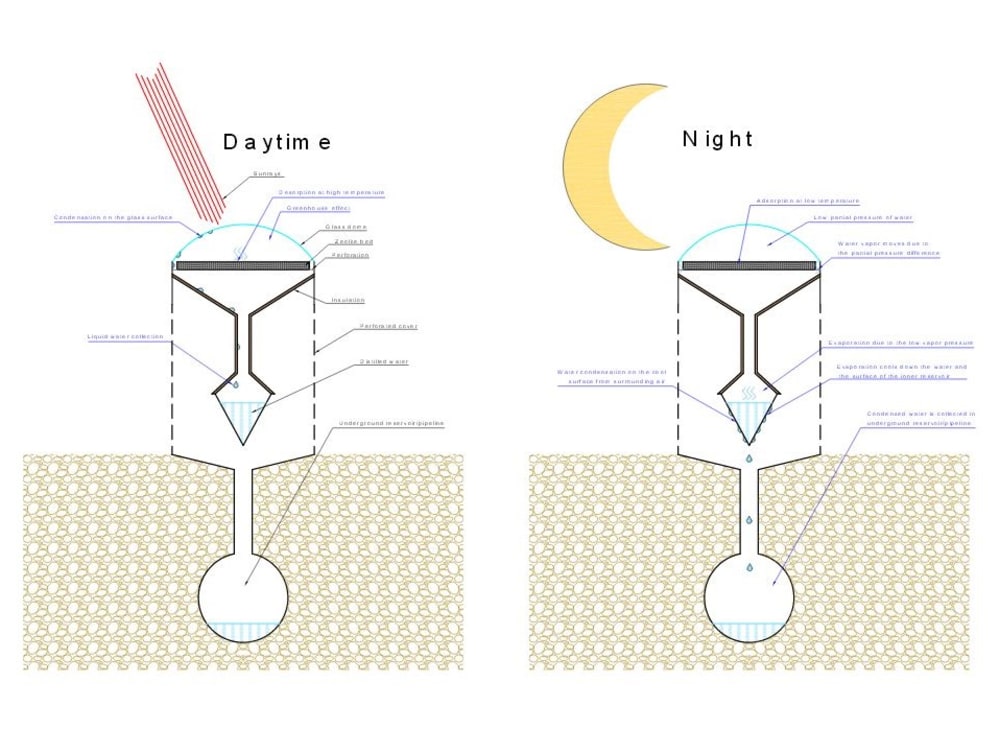Water scarcity and desertification are well-known problems for the poorest regions of the world. Atmospheric water generators could provide the solution, but they are complicated, expensive and they need additional energy for operation.
For the critical regions the requirements are defined by the lack of money, material and infrastructure:
- cheap
- no unique/dangerous materials
- simple design
- no moving parts
- no maintenance
- no extra energy
- easy to manufacture (handmade)
- long and safe operation
The idea is to merge the adsorption chillers and the atmospheric water generators using the sunlight and the big temperature difference between night and day in the desert. The illustrated module operates in two phases. During the day the sunlight increases the temperature in the upper part due to the greenhouse effect. The water steps out from the zeolite bed (zeolite is cheap and environment friendly molecular sieve) due to the thermal desorption and condenses on the relative cool surface of the glass roof. The condensed water flows down the wall and collects in the conic or V-shaped reservoir. During the night the temperature decreases and the dry zeolite starts to adsorb the water and the water partial pressure is decreases in the unit. The water starts to evaporate from the conic reservoir and cools down the wall of it. On the outer cool surface water condensates from the surrounding air and it flows down to the underground reservoir and can be used for drinking or irrigation. Next morning the process starts from the beginning.
Like this entry?
-
About the Entrant
- Name:Matyas Krabot
- Type of entry:individual
- Patent status:none

